Let’s make Tuna Poke, the iconic Hawaiian dish at home! In this recipe, fresh sashimi-grade ahi tuna is tossed with sweet onion, crunchy ogo seaweed, and sliced green onions in a zesty soy dressing. Not only is it refreshing, but this one-bowl meal is also a breeze to make! Enjoy as it is, over steamed rice, or as an appetizer with chips.
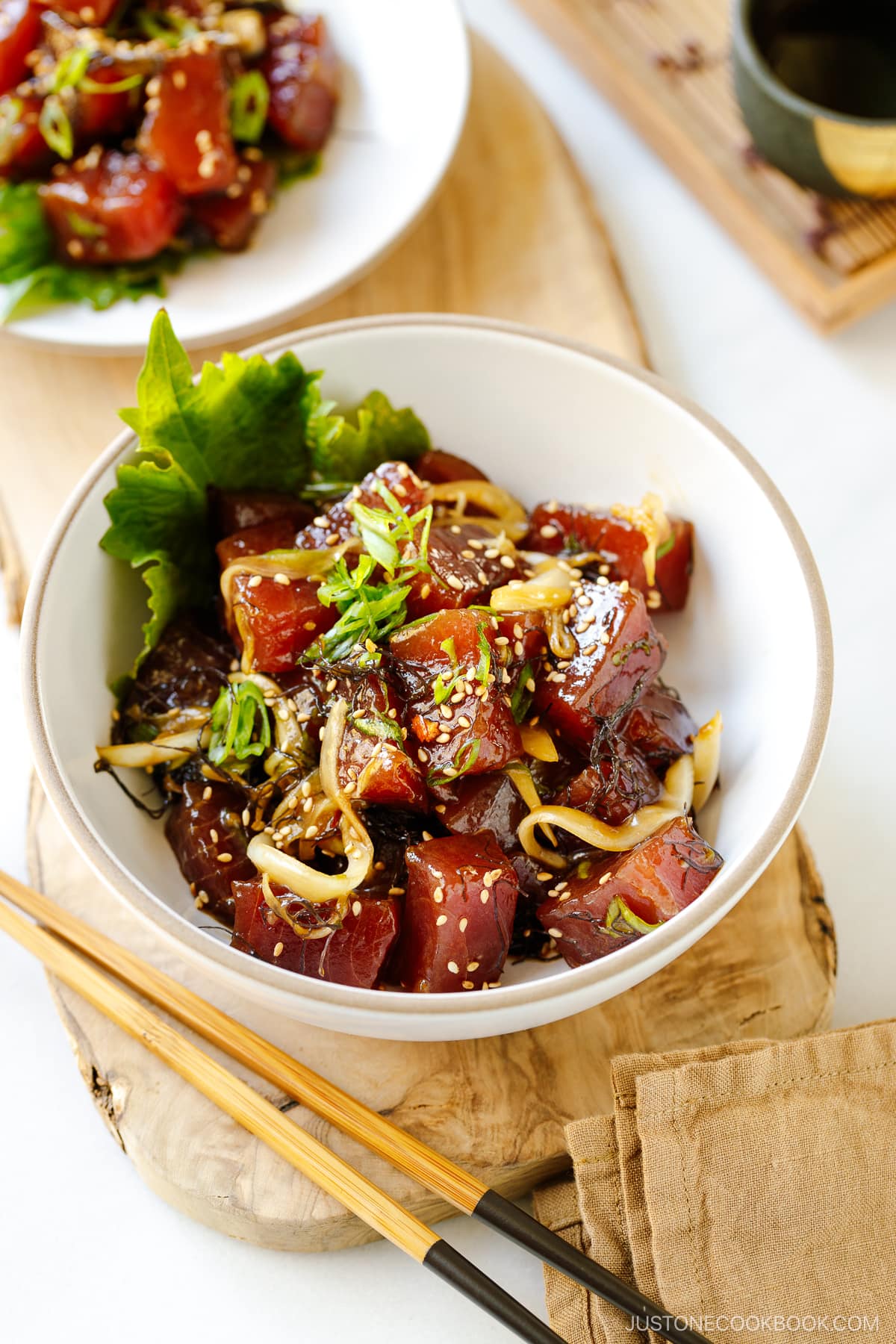
Today I’m bringing you one of the most iconic dishes from Hawaii—Ahi Tuna Poke. This raw seafood dish consists of melt-in-your-mouth ahi tuna, customizable mix-ins, and a soy-based seasoning. It is exactly as simple as it sounds!
Start with quality fish, and the best version of poke is the one you make yourself at home. I’ll show you how to put it together, where to source the ingredients and potential substitutions. Once you try it, you will want to make poke as often as possible.
Table of Contents
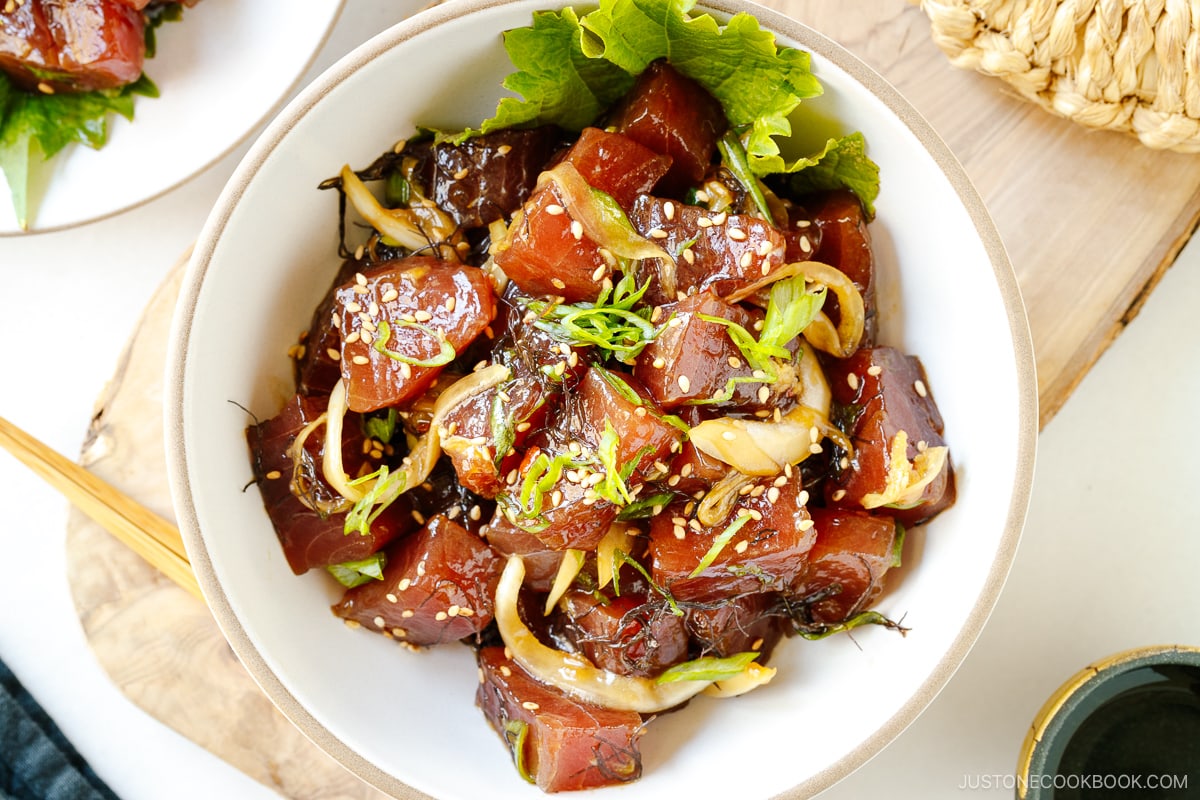
What is Ahi Tuna Poke?
Ahi tuna is a species of tuna found in all tropical and subtropical oceans. In Hawaii, “ahi” refers to two species: The yellowfin tuna and the bigeye tuna.
Poke (pronounced POH-kēh) means to “cut or slice” in Hawaiian and it also refers to cubes of marinated sashimi-grade fish.
While sushi and poke share similarities, poke is a traditional Hawaiian dish. Hawaiian food takes a lot of influence from different cuisines, including Japanese food.
You’ll find many variations of poke, but traditionally, poke is made with ahi tuna or octopus. The most popular seasonings in Hawaii are probably Shoyu Poke, where raw ahi tuna is marinated with soy sauce, sesame oil, sweet onions, and green onions, and traditional Hawaiian-style Poke, where raw ahi tuna is seasoned with Hawaiian sea salt, dried or fresh seaweed, and inamona (kukui nuts).
The real poke in Hawaii is a lot simpler. The modern poke bowls with a variety of toppings and sauces you often see are considered Mainland-style Poke.
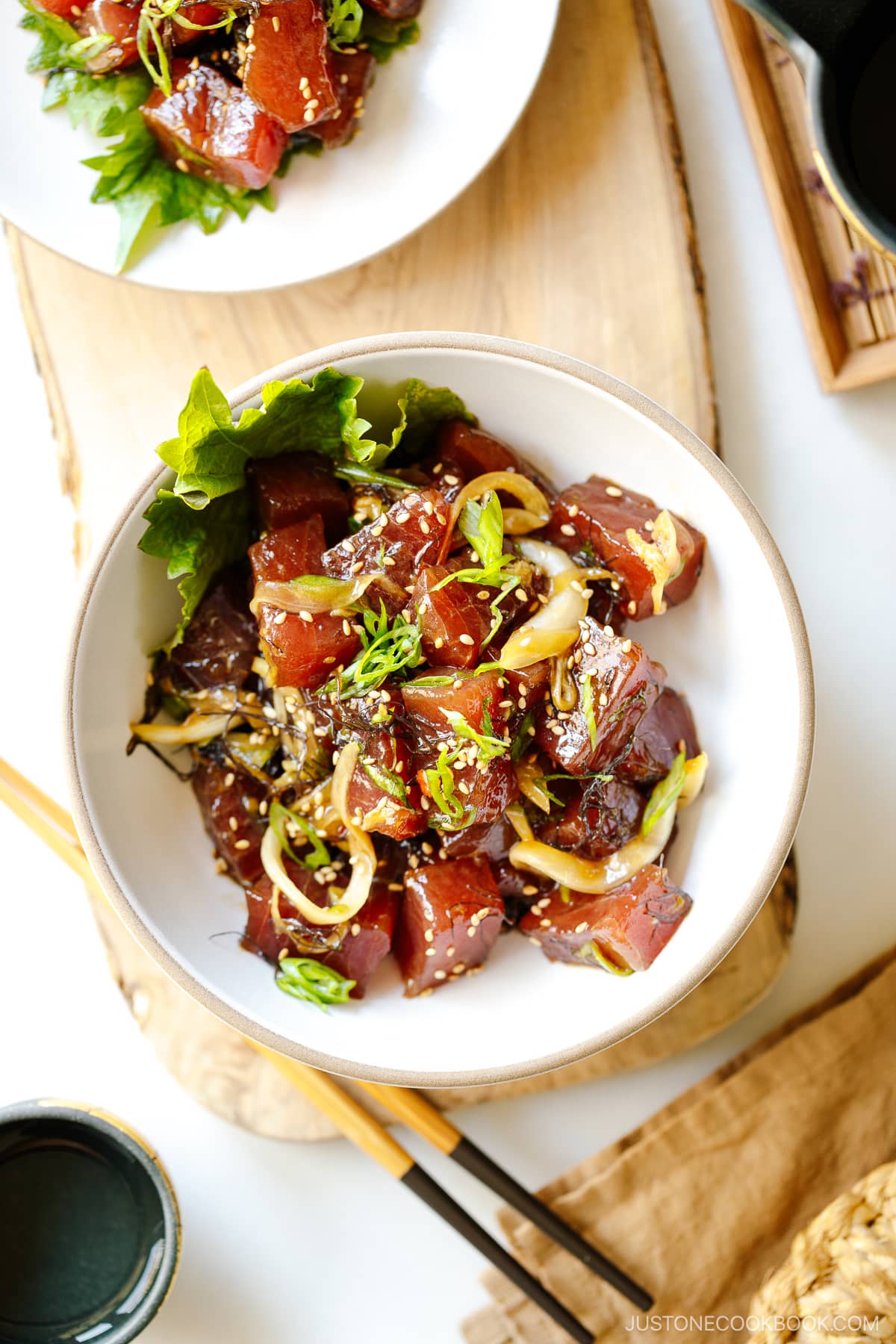
Where to Buy Sashimi-Grade Ahi Tuna
To make this dish, your main task is to find the freshest, sashimi-grade tuna. I recommend checking the sashimi selections at your local Japanese grocery stores. I always buy sashimi at Suruki Market in San Mateo. Other Japanese grocery stores that sell sashimi include Nijiya Market, Marukai (Tokyo Central), and Mitsuwa Market Place.
Alternatively, you can also find sashimi-grade tuna at Whole Foods and specialty seafood shops. If you are unsure, ask the fishmonger for recommendations.
Another best option is to shop at online sashimi stores such as Catalina Offshore.
To check the freshness, pay attention to the color of the tuna. The fish should look naturally bright and translucent, but nothing too vibrant as if it’s been treated. Pick the ones with little connective tissues (the white membrane in the muscles). Avoid any fish that looks dull, smells, or has a milky residue on it.
Getting Hawaiian Ingredients
Although I talked about sweet Maui onion, ogo seaweed, and inamona (roasted and crushed kukui nuts, also called candlenuts) in this recipe, getting Hawaiian ingredients can be hard.
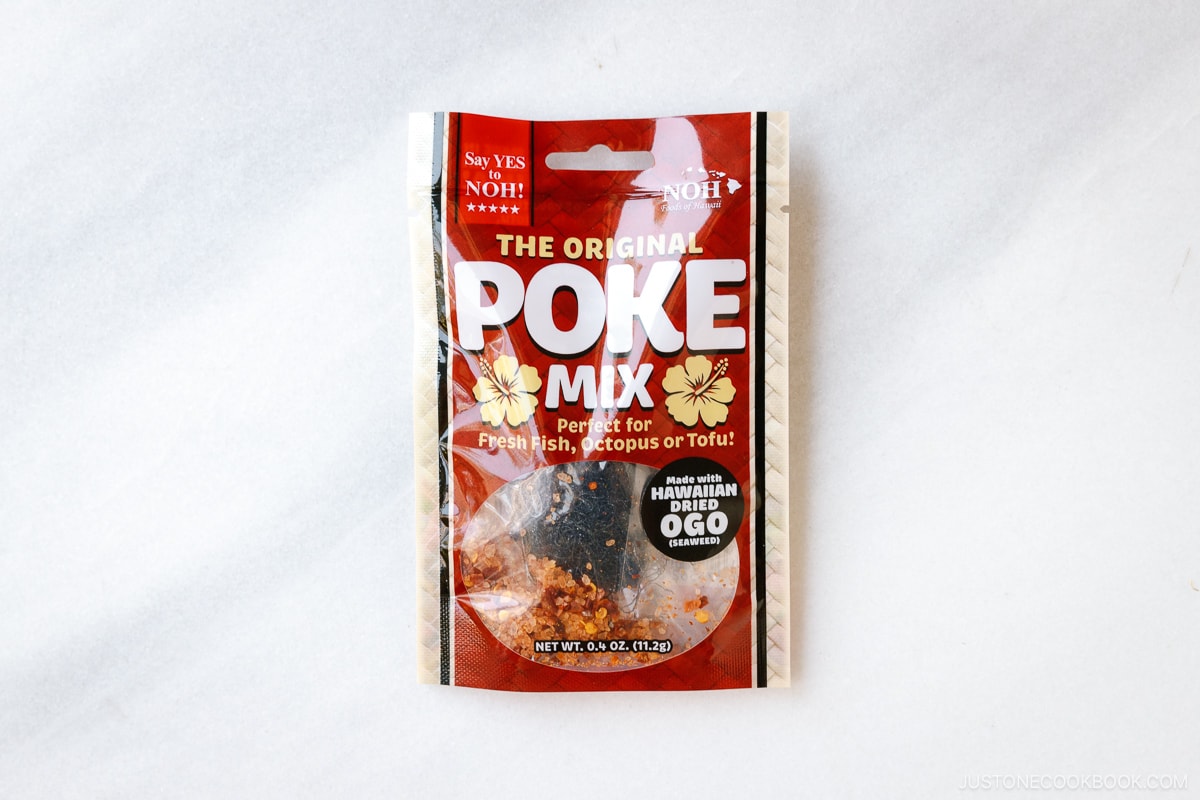
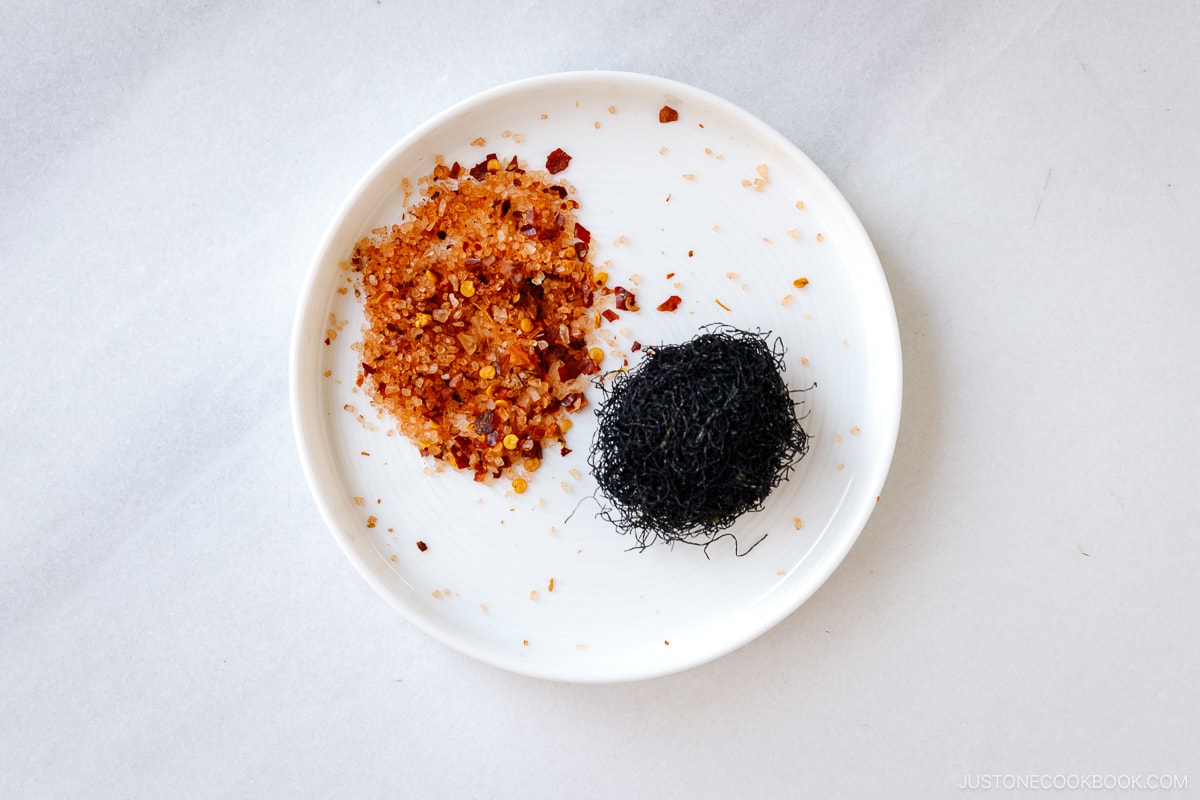
I bought this Poke Mix, which includes Hawaiian salt, ogo (a type of seaweed), sesame seed, and chili pepper, and used the salt and ogo. You can purchase it on Amazon or Japanese grocery stores.
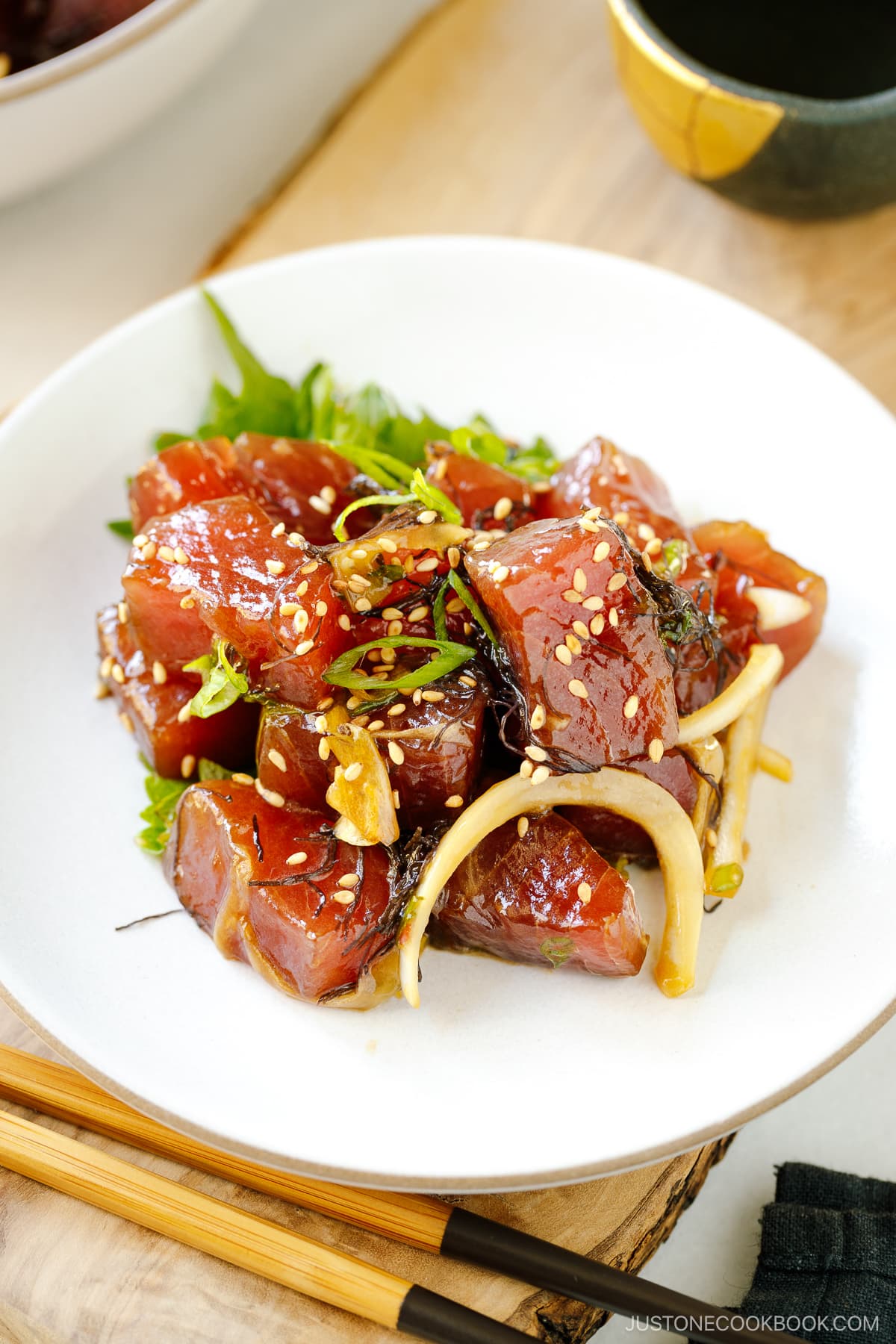
How to Make Tuna Poke
The Ingredients You’ll Need
- Ahi tuna or yellowfin tuna
- Sweet onion
- Green onion
- Hawaiian Ogo seaweed
- Toasted white sesame seeds
- Seasonings: soy sauce, sesame oil, sea salt, and ginger (optional)
The Cooking Steps
- Cut the tuna, sweet onion, green onion, and put them in the bowl.
- Add the seasonings and mix them all together. Cover and allow to marinate for 1 hour or up to 12 hours.
- Serve as an appetizer or as a meal over steamed rice.
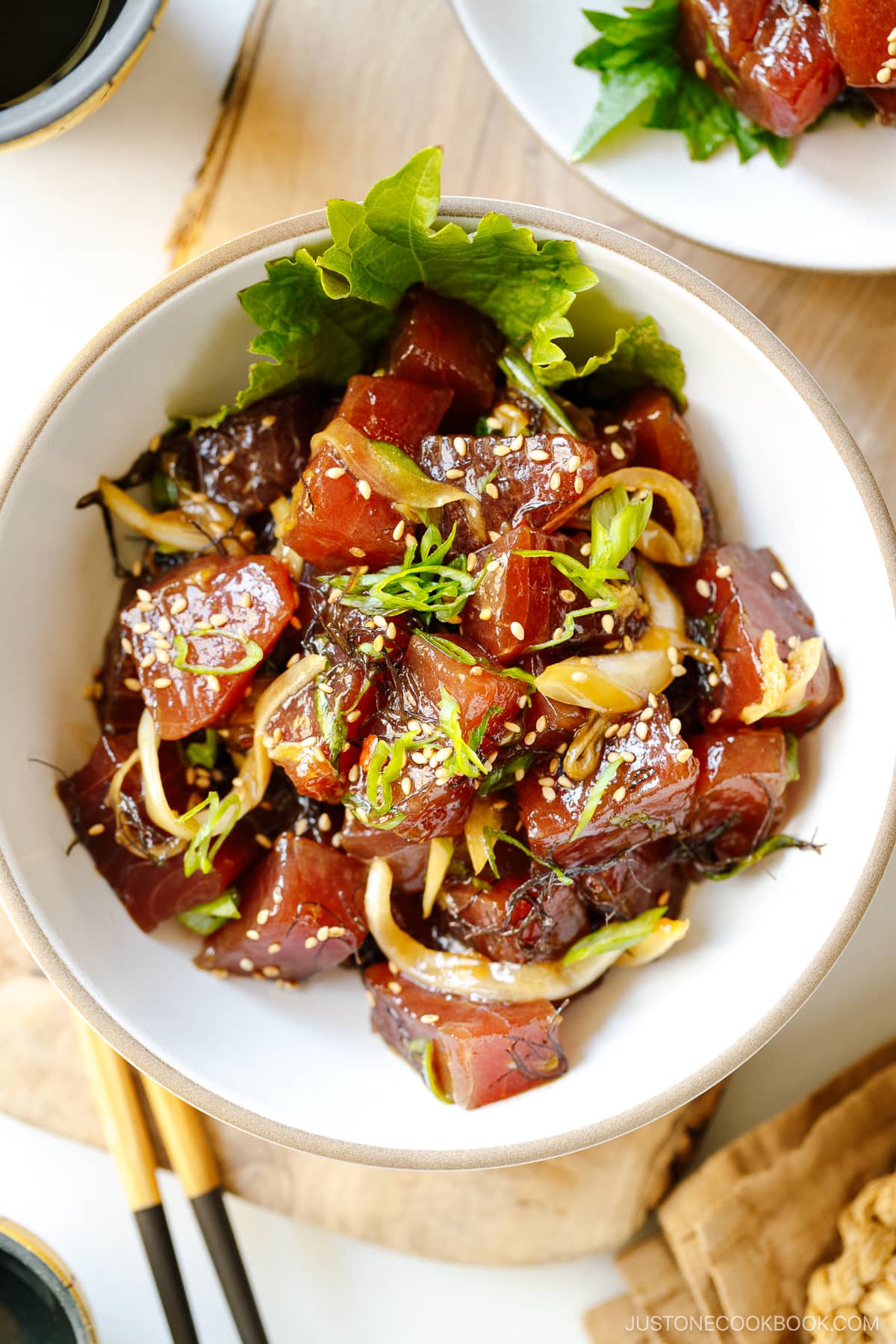
The Poke Variations and Substitutions
Not a fan of Ahi tuna? You can try:
- Salmon
- Hamachi
- Octopus (Tako)
- Scallops
If you don’t eat raw fish, you can easily substitute tuna with shrimp and imitation crab.
If you are vegan/vegetarian, make my Vegetarian Poke using tofu!
How to Make a Poke Bowl
There are so many ways to customize the poke bowl ingredients, and that’s the fun part!
This tuna bowl is fabulous on its own as a light main meal, or you can serve it as an appetizer to enjoy with chips or crackers. My favorite way is to serve it with some carb for a more substantial, one-bowl dish.
I start with steamed rice as the base. You can use white rice or brown rice, but I recommend using Japanese short-grain rice for the best texture.
Next, add the chilled poke. Make sure the tuna has been marinated for at least one hour in the fridge and has soaked up all the flavors!
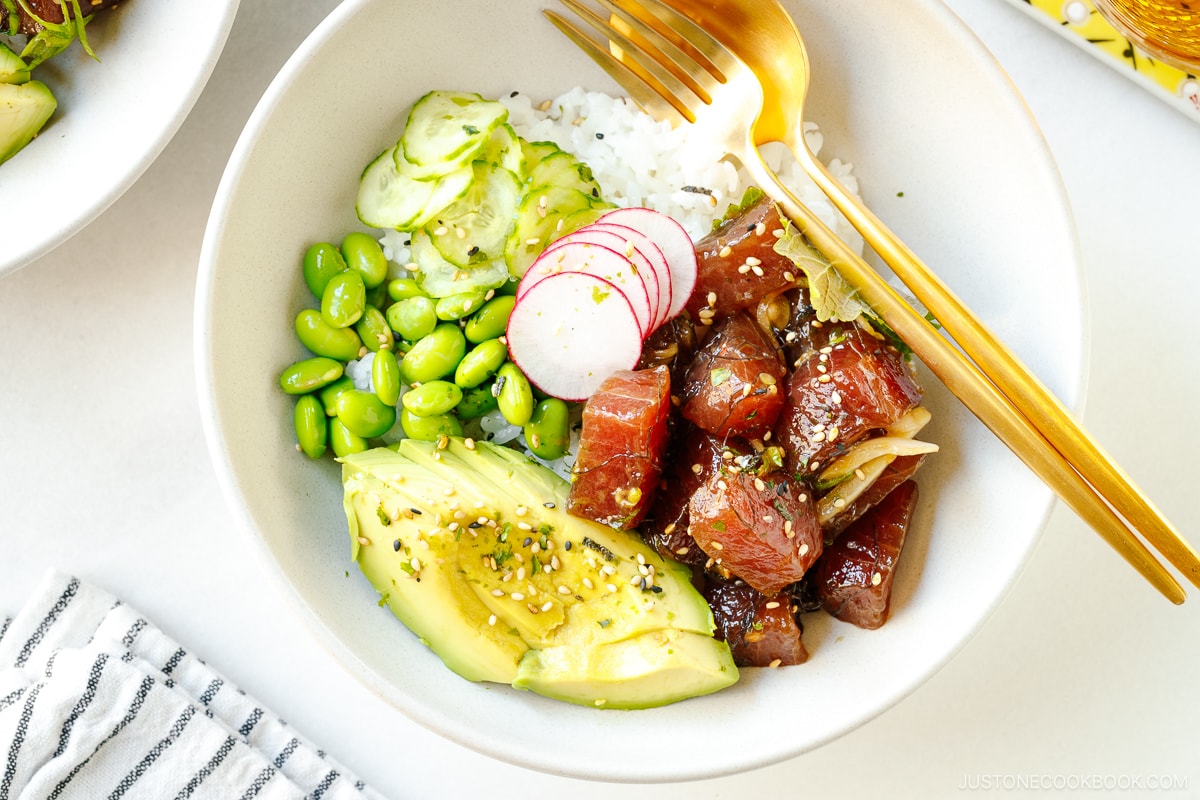
Then, add fresh ingredients like cucumber slices, creamy avocado slices or cubes, edamame, and sliced red radish for color. You can sprinkle furikake (rice seasoning) to add more crunch and umami. That’s it, you’ve made yourself a colorful, nutritious, and deeply satisfying Poke Bowl!
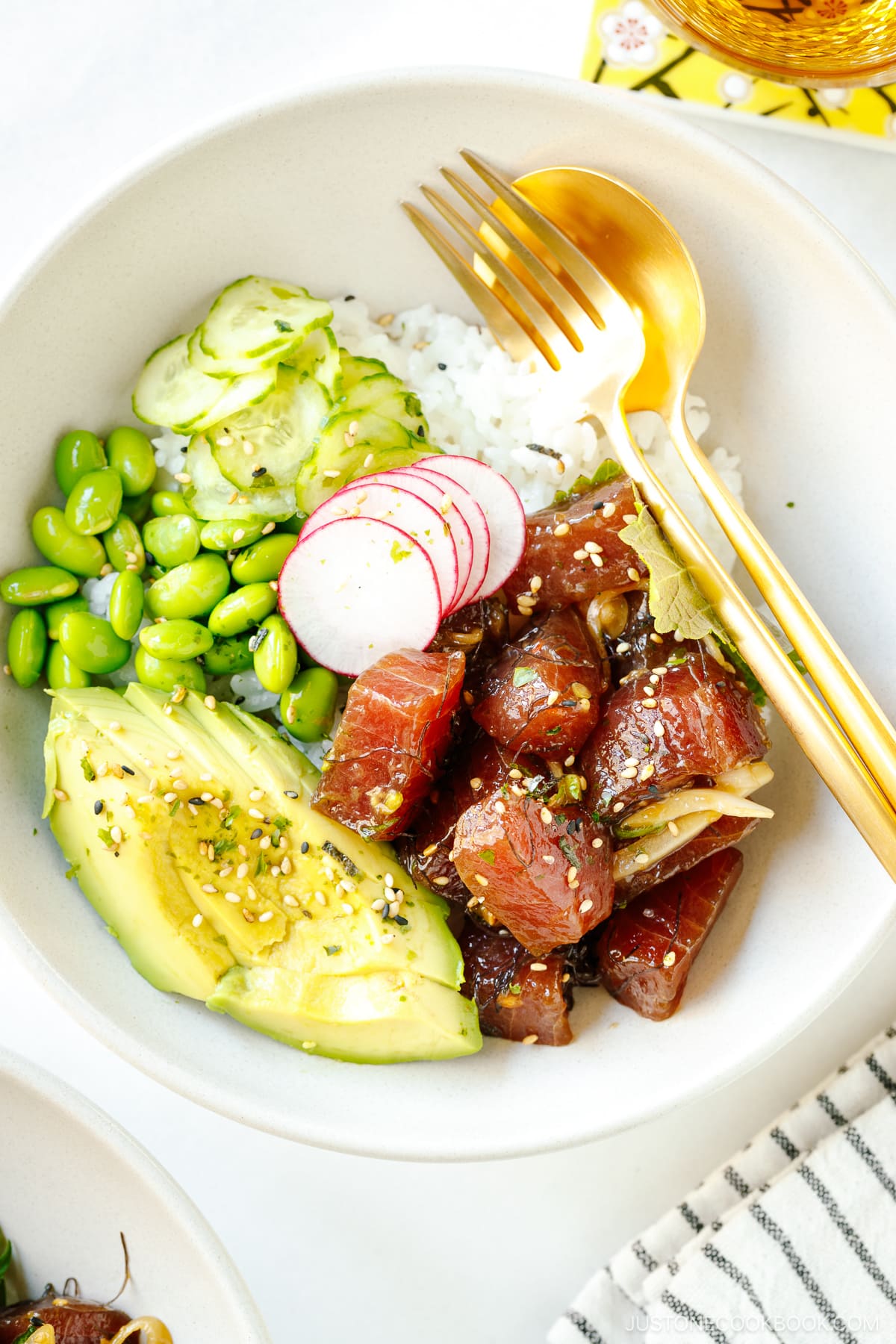
FAQs
Is ahi tuna poke healthy?
Ahi tuna is a good source of protein, omega-3 fatty acids, and vitamin B12. However, the definition of ‘healthy’ is subjective and it often comes down to bio-individuality, so use your own discretion or consult with professional nutritionists if you have any health concerns.
What to Serve with Tuna Poke
Other Hawaii-Inspired Dishes
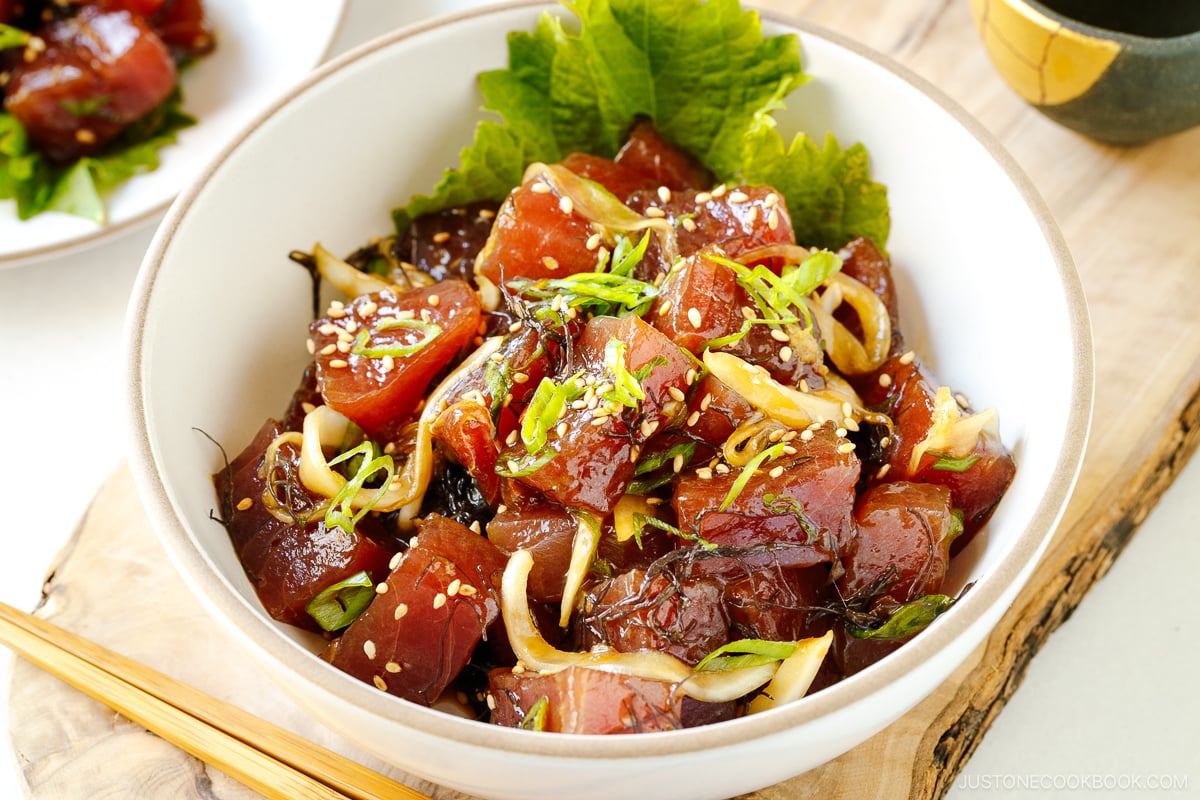
Wish to learn more about Japanese cooking? Sign up for our free newsletter to receive cooking tips & recipe updates! And stay in touch with me on Facebook, Pinterest, YouTube, and Instagram.
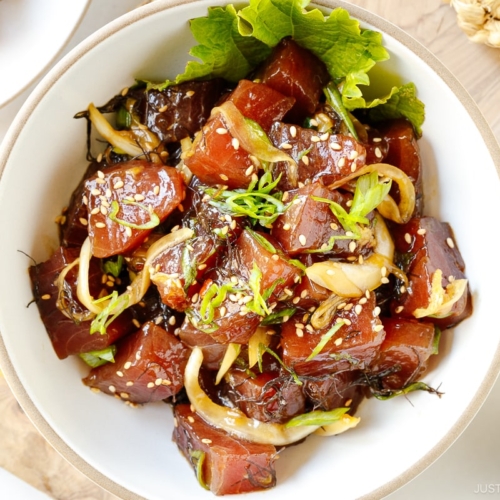
Tuna Poke
Video
Ingredients
- 1 small clump Hawaiian ogo seaweed (dried; about the size of 1 ping pong ball; for 4 servings, I used half the ogo from a Noh Foods Hawaiian Poke Mix package; skip if you cannot find it)
- ¼ sweet onion (use Maui onion for the best flavor)
- 2 green onions/scallions
- 1 lb sashimi-grade tuna (try ahi or skipjack for an authentic flavor)
- 1 tsp toasted white sesame seeds
For the Seasonings
- 2–3 Tbsp soy sauce
- 1 Tbsp toasted sesame oil
- ⅛ tsp Diamond Crystal kosher salt
- ¼ tsp ginger (grated; optional)
Instructions
- Before You Start: Please note that I recommend a marinating time of 1 hour for the poke to develop the best flavor. If you‘re short on time, you can always marinate for less time or serve it without marinating. Now, gather all the ingredients.

To Prepare the Ingredients
- To a small bowl, add 1 small clump Hawaiian ogo seaweed (dried) and enough water to cover. Soak for 5 minutes to rehydrate.

- Squeeze the water out and cut the ogo into smaller pieces, about 1 inch (2.5 cm) long.

- Thinly slice ¼ sweet onion lengthwise.

- Thinly slice 2 green onions/scallions.

- Cut 1 lb sashimi-grade tuna into bite-sized cubes, about ¾ inch (2 cm). Transfer the tuna to a large bowl.

To Season and Marinate
- Add the onion, ogo, and green onion to the bowl.

- Add 2–3 Tbsp soy sauce, 1 Tbsp toasted sesame oil, and ⅛ tsp Diamond Crystal kosher salt.

- Optionally, you can grate the ginger and add ¼ tsp ginger to the mix.

- Gently mix it all together. Cover the poke and marinate it in the refrigerator for at least 1 hour (or up to 12 hours in advance) to develop the flavors.

To Serve
- Serve the poke in a serving bowl or plate. Sprinkle 1 tsp toasted white sesame seeds on top. Enjoy Poke as a main dish with steamed rice or serve it as an appetizer.

- You also can serve it donburi style in a poke bowl over steamed rice—typically 1⅔ cups (250 g) of cooked Japanese short-grain rice per donburi serving. Add your favorite toppings like sliced avocados, edamame, and sliced cucumbers. For more ideas for toppings, see my Poke Bowl recipe.

To Store
- It‘s best to enjoy it on the same day. You can keep it in the refrigerator for up to 24 hours.
Nutrition
Editor’s Note: The original post was published on October 25, 2012. It’s been republished with a revised recipe, a new video, step-by-step and final images, and more content on September 5, 2023.
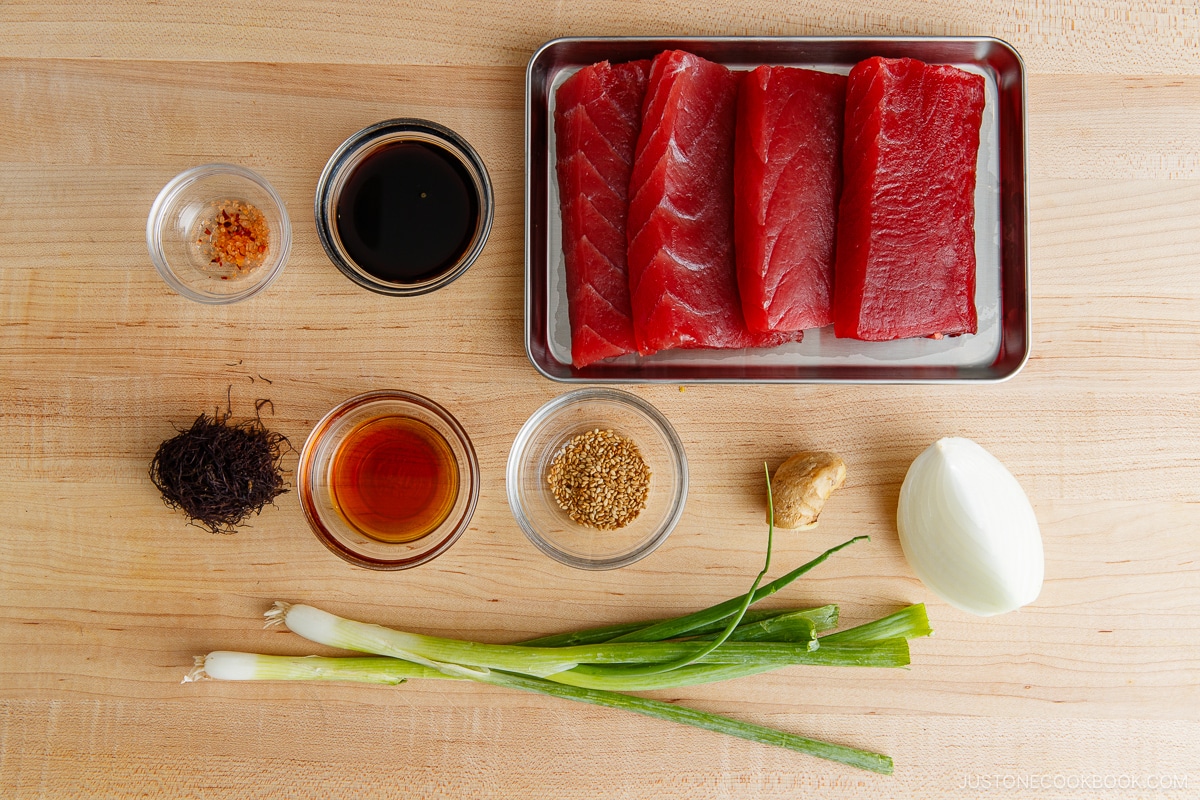
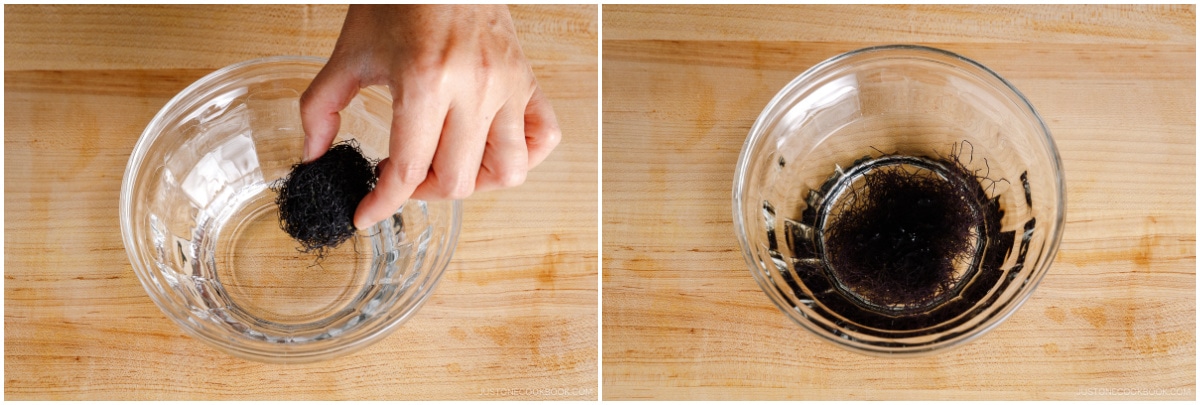
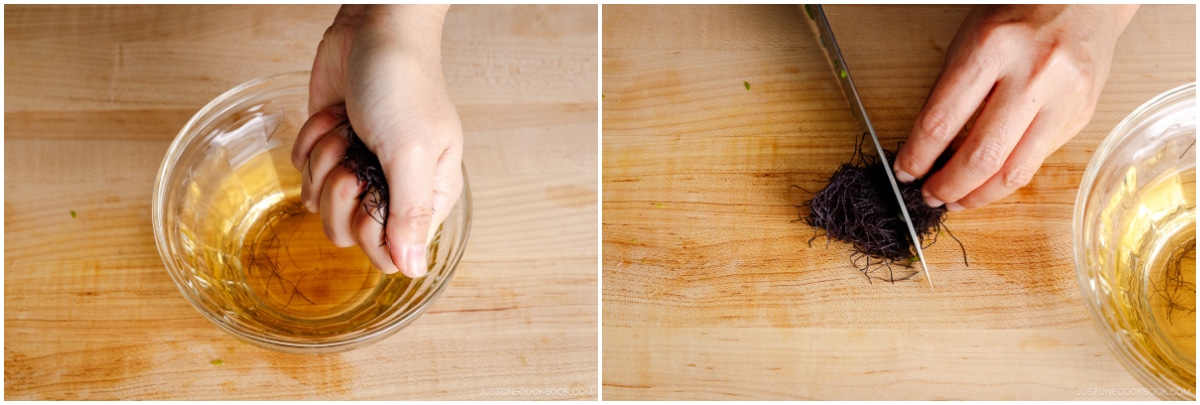
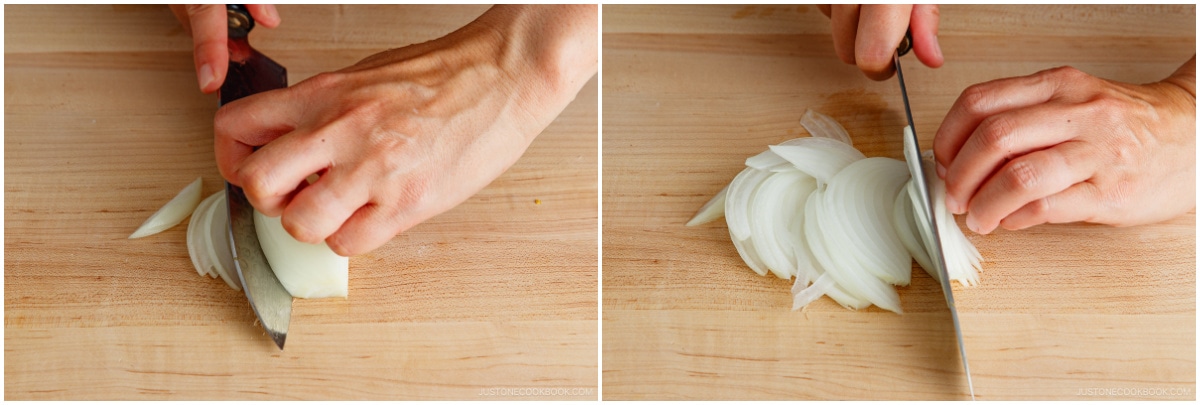
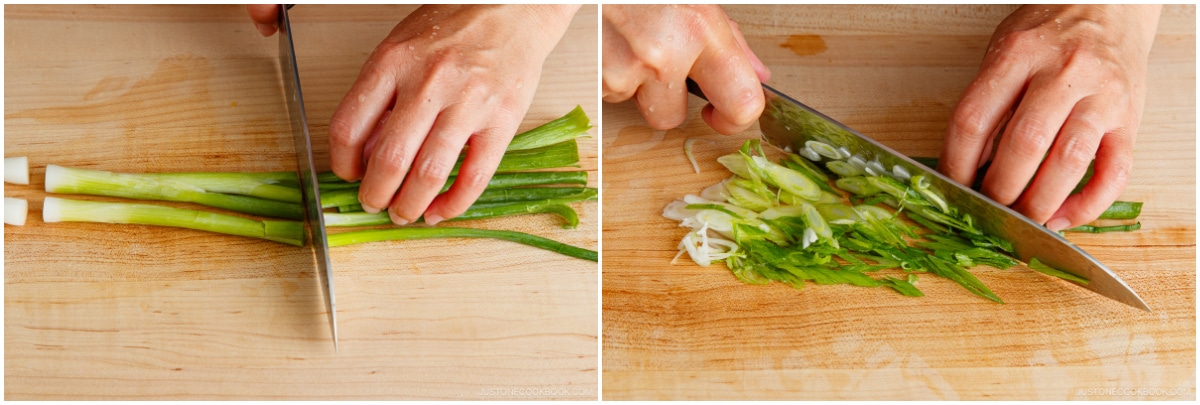
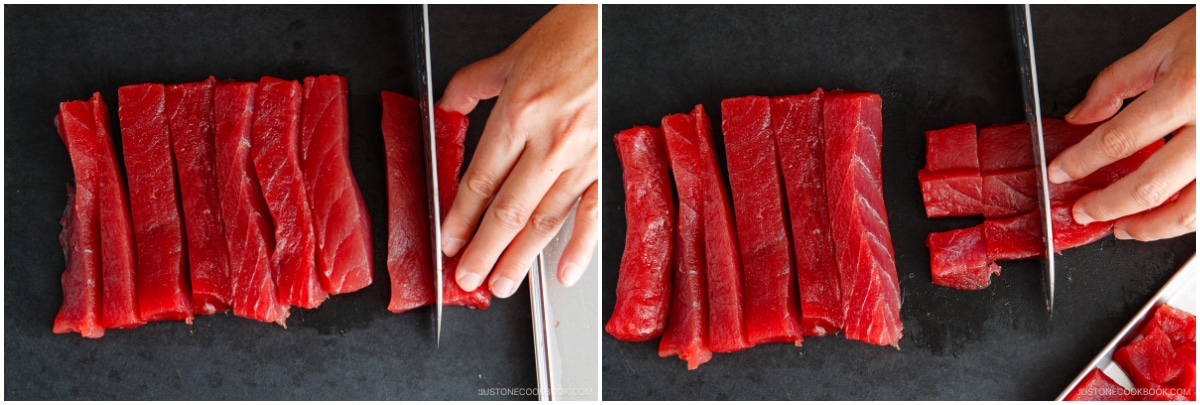
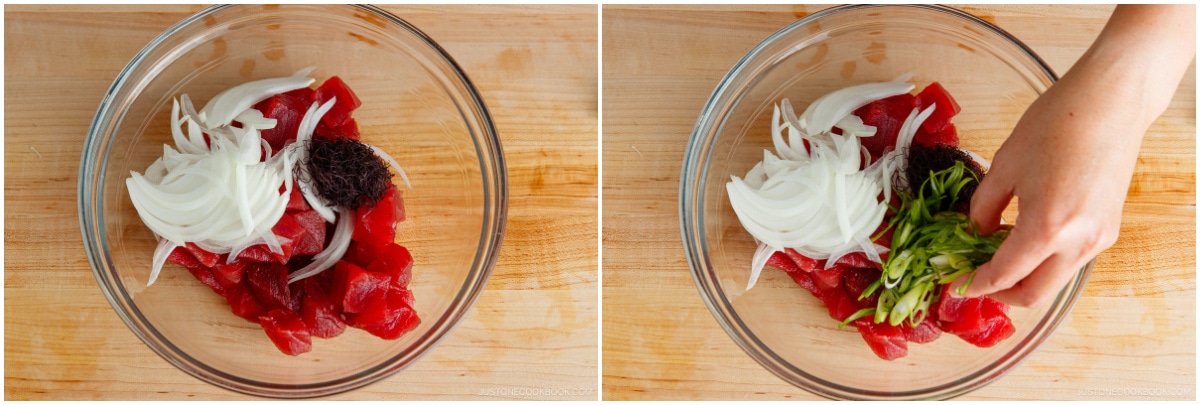
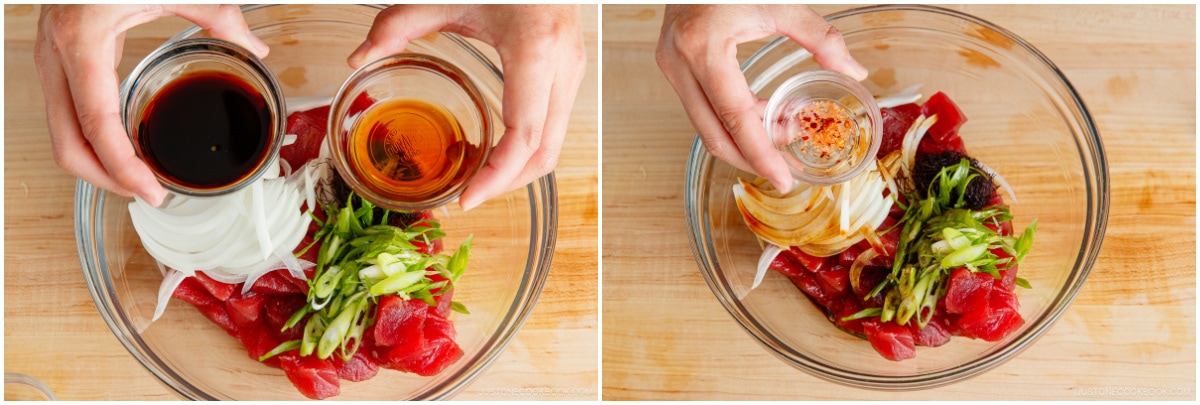
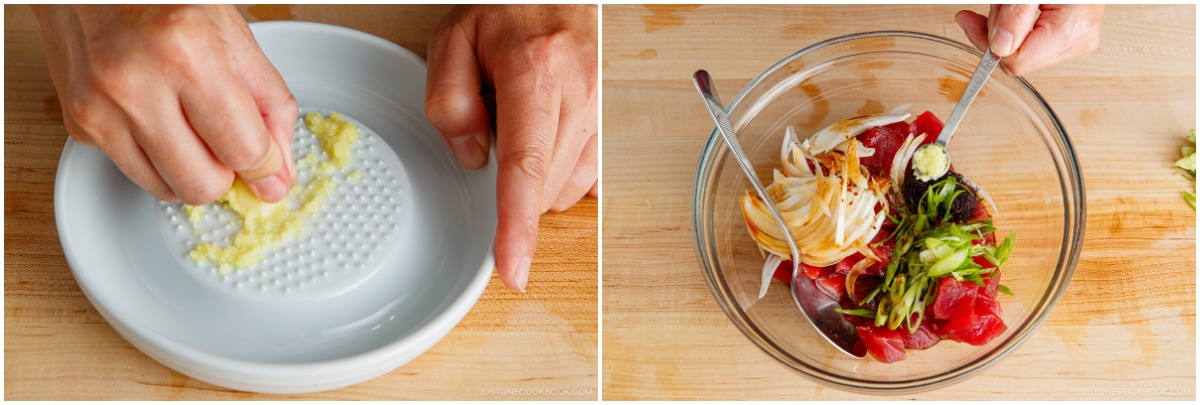
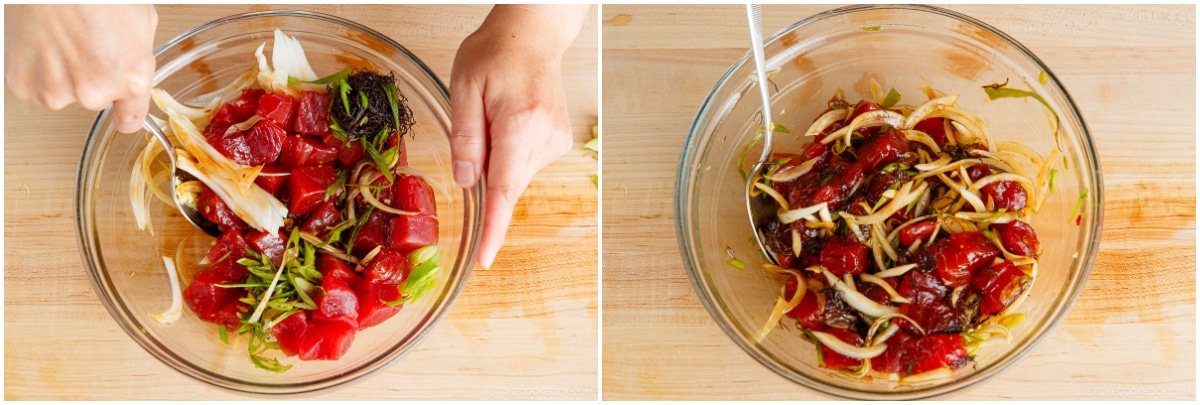
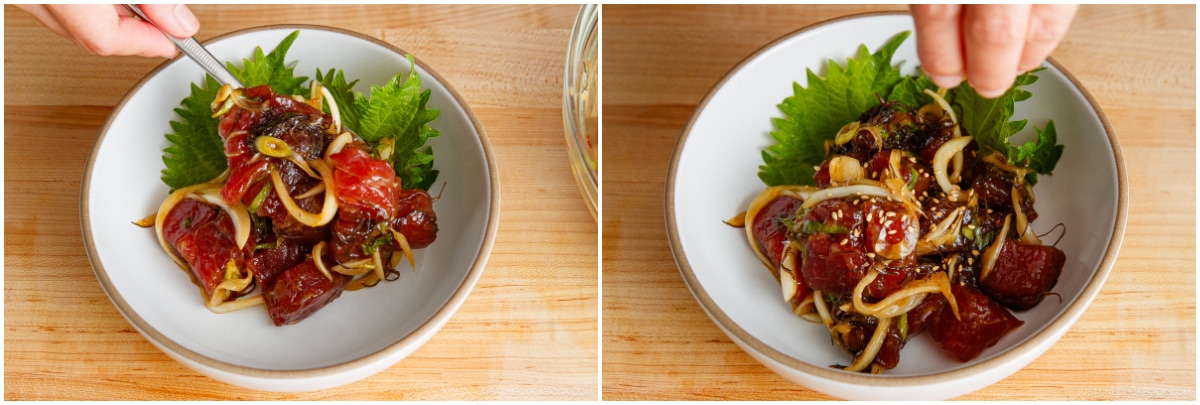

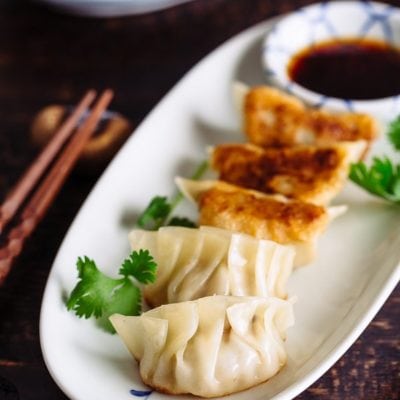
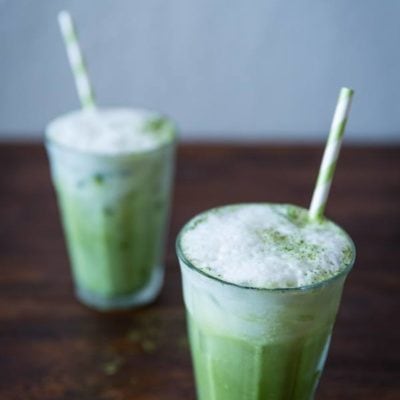


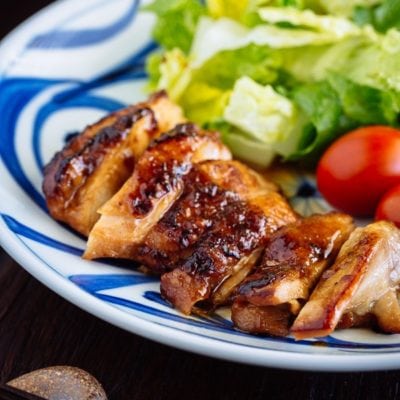
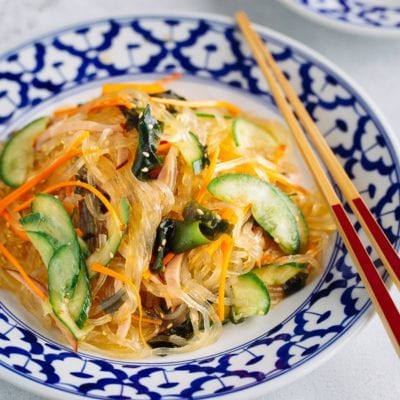
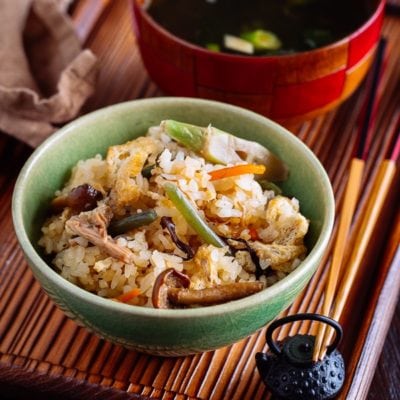
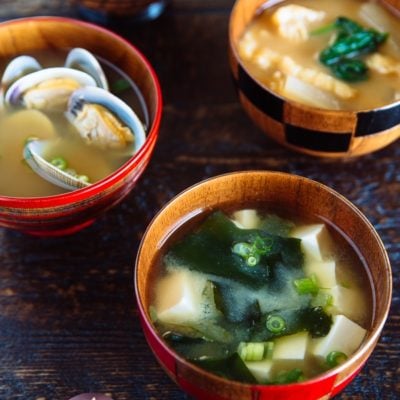



I used the seasoning from this recipe to make spicy tuna rolls without sriracha. Glad I did too, because I bought frozen sushi tuna ahead of time and it tasted frozen. Thankfully the la-yu and soy sauce masked that!
Hi Will! Awesome! We are glad to hear this recipe worked well for you!
Thank you very much for trying Nami’s recipe and for your kind feedback.😊
Hi Nami,
I have been following you and cooking your recipes for years but have never left a comment before. I love your website and videos and have also been following Miso on instagram since I have a new puppy myself. My mother was from Tokyo and was a great cook so the food you make is nostalgic for me. I made this for lunch today with the addition of cucumber cubes. My husband and I loved it! Thanks for the amazing work you and your husband put into this website. It brings me much joy and yummy dishes!
Hi Susan! Thank you so much for trying my recipes for years. I’m glad to hear you and your husband enjoyed this recipe! Thanks for your feedback!
I really love reading and making your recipes.
Do you have a recipe for Ikayaki ?
So good with Japanese mayo
Hi Pierre! I don’t have it, but it’s easy, make the sauce (1 tbsp soy sauce, 1 tbsp sake, 1 tbsp mirin, optional sugar, grated ginger). Cook the squid, and add a splash of sake and let it steam cook. And add the sauce and coat well. Yes, good with mayo! Enjoy!
[…] Tuna Poke […]
Hi!!! Just discovered this site when searching for takouaki recipe. Now ive surelu fallen diwn the rabbit hole. This look wonderful. Can we switch the tuna for salmon?
Hi Lisa! Thank you for discovering my site and welcome to JOC! Yes, you can use salmon for this recipe. 🙂 Enjoy!
I see your “never miss a recipe” at the bottom…..I put my email address there but now what?…..there is no send button
Hi David! If you look at the box it says “Enter your email address and hit return”. That’s how the web designer made…
Hi Nami,
Can you substitute tuna with salmon? Recipe looks amazing
Hi Sam! Yes you can. I hope you enjoy it! 🙂
Hi Nami,
It turned out it really well but i used Kizami Nori. The only thing is i can’t find ogo seaweed. Is there another name for ogo seaweed? I”m going to make the recipe again 🙂
Take Care
Sam
Hi Sam! Thank you so much for writing feedback! Glad to hear it turned out well.
According to wiki, it says ogonori is also called ogo or sea moss. I took out only ogo from Poke Mix ).
).
If you can get sashimi-grade fish, I hope the same store (maybe) carry the poke mix. Good luck! 🙂
Hi Nami,
I love Poke! Where did you find the Poke mix?
I’m glad to hear your hosting migration is fixed. =)
Thanks Candice! I think I got it in Nijiya. 🙂
I’m always amazed the amount of work you put into your website. Today’s recipe looks wonderful and will try it asap.
Thanks you so much Nami
Hi Agnes! Thank you – blogging, especially food blogging takes a long time as we have to plan a meal, cook, take pictures, edit photos, etc etc… but it’s fun especially working with food! 🙂 Technical part is the tough part for me. So many things I want to get it done but I’m lacking knowledge. 🙂 Thanks for your feedback Agnes!
Before I finished reading the entire post, I was going to send you some Poké mix! I didn’t know it was readily available to you. You could very well cut the ahi cubes smaller and wrap the mixture in temaki rolls–yum!
Hi Donna! Aww you are so sweet! Thank you very much! It looks like I’m in luck with Poke Mix! I found it in Japanese supermarket here. I’m going to make temaki with poke next time – that’s a fantastic idea!
Yum! Poke is so ‘ono (delicious)! Your version looks oishi. Aloha from Hawai’i!
Hi Kel! Ono means delicious. Thanks for teaching me! Arigato for your kind message. Aloha! 🙂
Nami, what type of tofu can be used if the ahi is not available? I live in the desert so ahi is hard to come by and poke is a family favorite. I always purchase extra firm tofu, freeze it, thaw and squeeze all the water out, but I don’t think it would work as an ahi substitute.
Thanks!
Hi Stephanie! I use firm tofu. I never froze tofu before and that’s an interesting technique. Here’s what I normally do.
Drain tofu and place on a plate lined with 2-3 paper towels. Cover tofu with another 2-3 paper towels. Then put another plate on top to compress the tofu and squeeze out the excess water. I leave it at least 15 minutes before cutting into small cubes.
I wouldn’t call tofu as “substitute” for ahi tuna; however, if someone doesn’t like raw fish but still want to try Poke or eat something light, I think tofu is the best alternative. 🙂